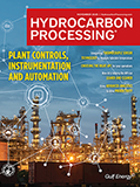Case study: Why did the tube sheet of the waste heat boiler deform?
This article analyzes the causes of a 19-mm protrusion of the tube sheet and the tube joint leaks that occurred within a sulfur recovery unit (SRU) waste heat boiler (WHB).
Korea Engineering Consulting:
Y. Ha
IP: 10.3.3.253
This is a preview of our premium content. Thank you for your interest—please
log in or
subscribe to read the full article.
The Authors
Lee, S. - SK Energy, Ulsan, South Korea
Sang-Mo Lee has more than 26 yr of experience as a Fixed-Equipment Engineer at SK Energy. His main tasks include root cause analysis (RCA), troubleshooting, fitness-for-service (FFS) evaluation, maintenance procedures and technical support for the refining and petrochemical business. He earned a BS degree in mechanical engineering, and is qualified as a professional engineer for welding and metallurgy by the South Korean government.
Y. Ha - Korea Engineering Consulting, Seoul, South Korea
Related Articles
From the Archive







Comments